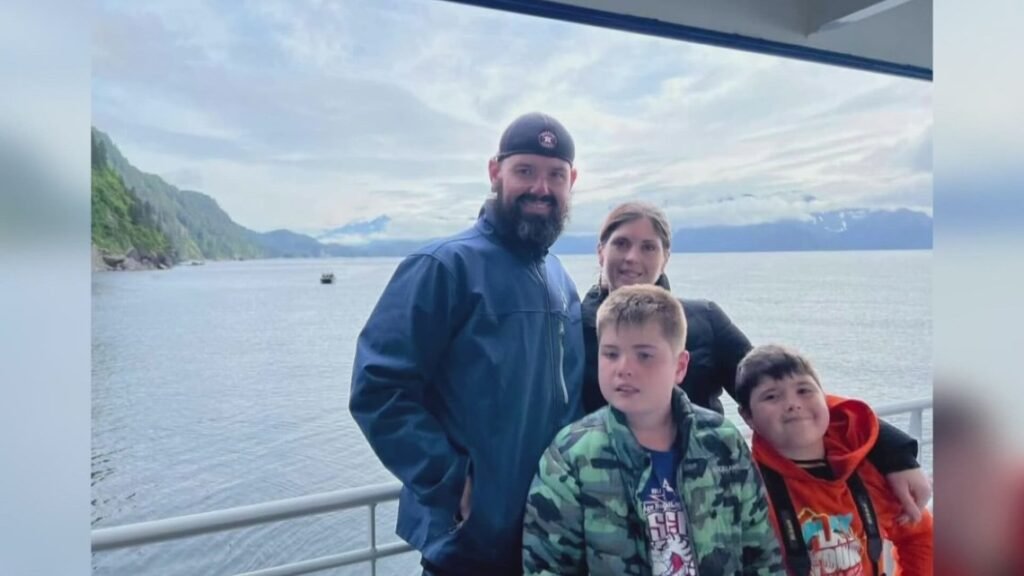Volunteer divers believe they’ve found the remains of three members of the Maynard family, who went missing in Alaska in August 2024.
HOMER, Alaska — After months of searching, an all-volunteer dive team in Alaska believes they have recovered the remains of three members of the Maynard family from Troy, who went missing when their boat capsized off the Alaska coast in August 2024.
“We don’t know for sure if it was three bodies or what, because we can’t see anything,” said Jeremy Lilly, current president and founder of the Alaska Dive Search Rescue and Recovery Team. “So as we find remains, we send them to the surface so the medical examiner can go through and do identifications.”
The Alaska Dive Search Rescue and Recovery Team announced they successfully recovered three sets of remains from a sunken 28-foot aluminum vessel located 180 feet below the surface, 16 miles west of Homer Spit.
The Tragedy
On Aug. 3, 2023, Mary Maynard, her husband David and their two sons, Colton and Brantley, were aboard a boat with four other passengers when it capsized in treacherous Alaska waters. While the four other passengers were rescued, the Maynard family remained missing.
The U.S. Coast Guard initially led search efforts but called off the operation approximately 24 hours after the incident, telling 6 News on Aug. 7 that the matter was no longer an active Coast Guard case.
Volunteer Team Takes Over
When official search efforts ended, the Alaska Dive Search Rescue and Recovery Team stepped in to continue the mission. The unpaid volunteers were supported by three companies—Support Vessels of Alaska, Vision Subsea and Benthic Geoscience Inc—who provided specialized equipment for the search. The team was able to locate the boat in May 2025.
“That’s the whole reason we do this,” said Lilly. “I founded the team so that way we could bring closure to families around Alaska and even outside of Alaska.”
The boat was positively identified in early May 2024, and the team began the complex recovery operation on May 27 and 28.
Dangerous Deep-Water Recovery
The recovery operation presents extreme challenges. The vessel sits in 180 feet of water with strong currents ranging from 1 to 7 knots, requiring divers to use hand-over-hand rope techniques to reach the wreck.
“Where the vessel is at Kachemak Bay, that goes anywhere from 180 ft to 300 and some feet deep,” said Lilly. “And very high currents. The lowest current we saw was about 1 knot, and we were seeing up to 7 knots, which actually becomes faster than that depending on the tidal exchange. It’s a heavy silt area, so it’s all glacial silt, so there’s no visibility, especially when you get to the bottom and you disturb anything down there. You’re doing everything by touch and trying to locate things while you’re down there.”
The 43-degree water and depth require mixed gas breathing equipment. One recent recovery dive lasted 3.5 hours to retrieve a single set of remains. Divers can only make two dives per day due to the physical demands and safety requirements.
“Typically we plan for 20 minutes on the bottom of actual searching and doing work and then it will take us the remaining time to get back to the surface,” said Lilly. “So we’re looking about two hours total dive time to get back to the surface after doing decompression stops to work our way back up.”
The team said it has cleared the main cabin of the vessel and plans to return to search the smaller front cabin once weather and current conditions allow.
Ongoing Search
The recovered remains await positive identification and autopsy by the state’s medical examiner. The dive team continues searching for the fourth family member.
“So basically we stopped yesterday just because of the weather conditions we’re picking up and we have to decontaminate the gear that we were using so it’s safe for the divers to use again, just because we’re dealing with remains and that kind of thing,” said Lilly. “So we came back, reset just because of weather and get that stuff set again, and then once a weather window opens again we’re going to go back down and search the cuddy cabin that’s on that boat, which is a much smaller area, but we searched the main cabin for the most part this time, but our goal is to make sure that we search every place in the boat to make sure there’s no more remains in it,” said Lilly.
The volunteer organization operates solely on donations, with members taking time away from their paying jobs to conduct the dangerous recovery work.
Community Impact
Family and friends of the Maynards have been waiting for closure for over a year. Loved ones have requested privacy during this difficult time.
“It’s a relief in some ways that the remains are still on the vessel, which makes them easier to recover and bring home to the families,” said Lilly. “At the same time, it’s still the same thing of grief.”
The Alaska Dive Search Rescue and Recovery Team emphasized their commitment to the mission: “We’re always hopeful that we’ll be able to find everyone that was on the boat.”
